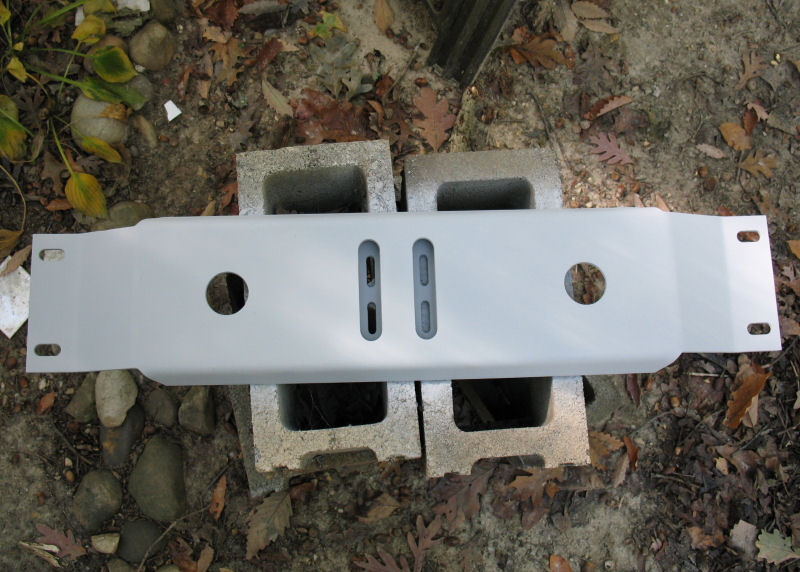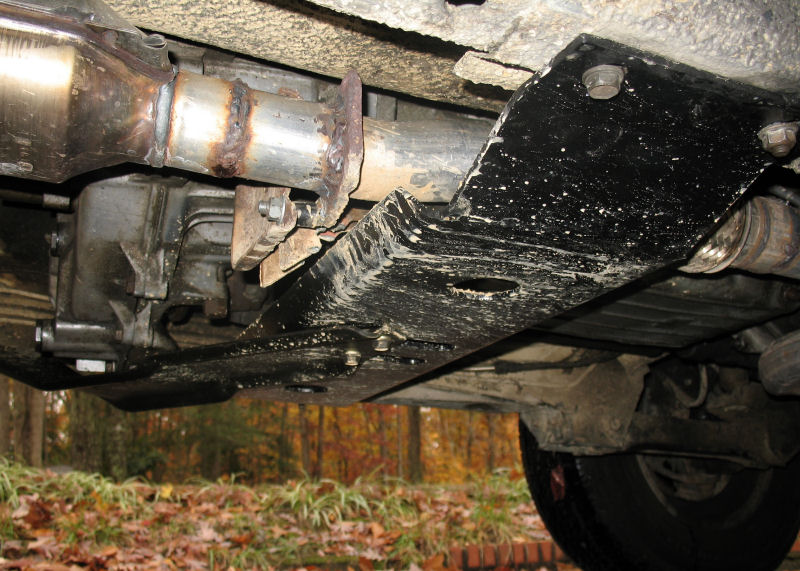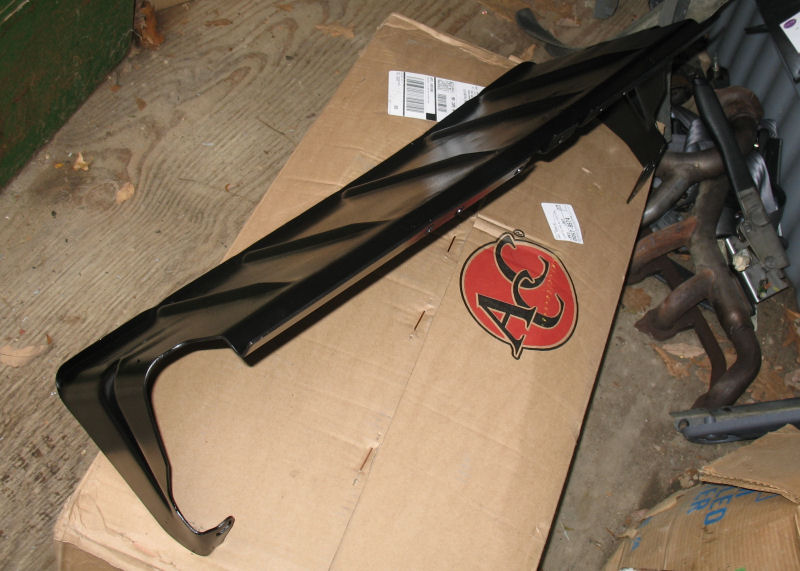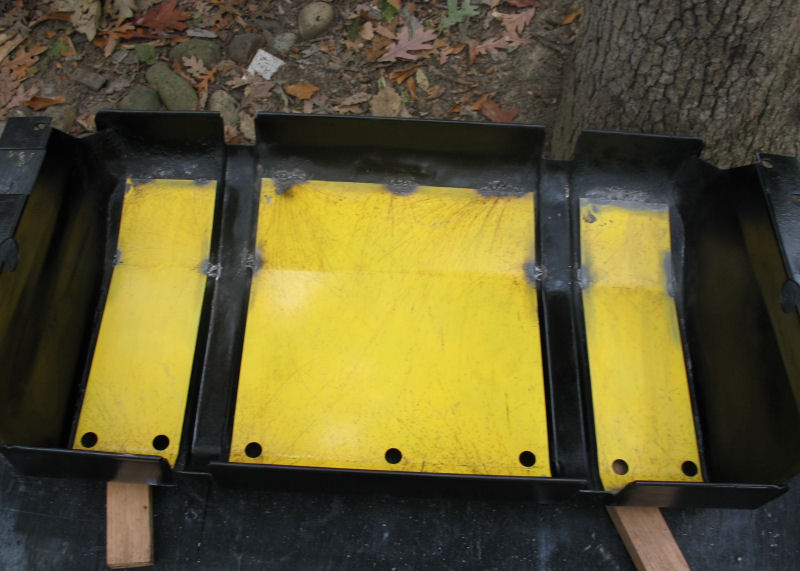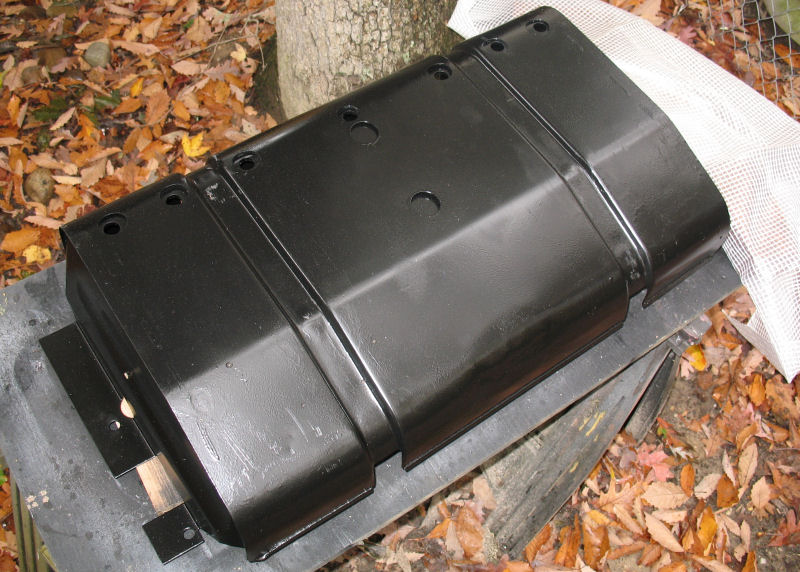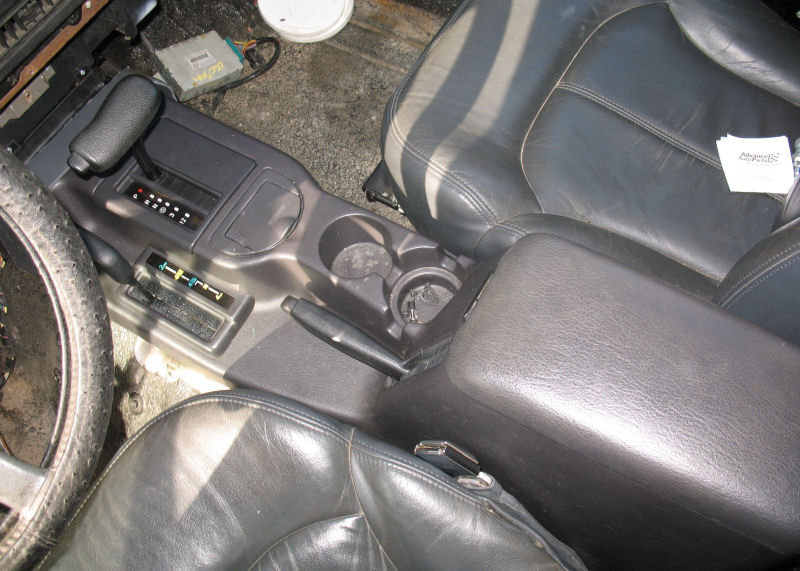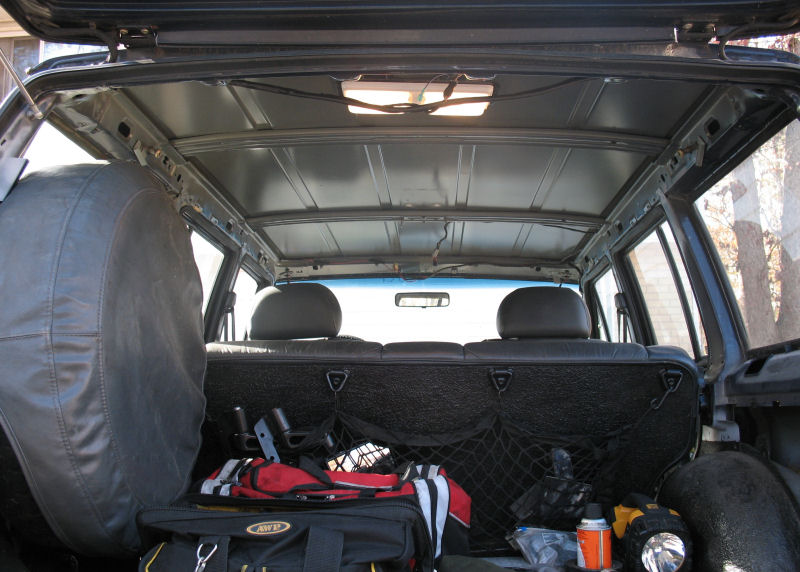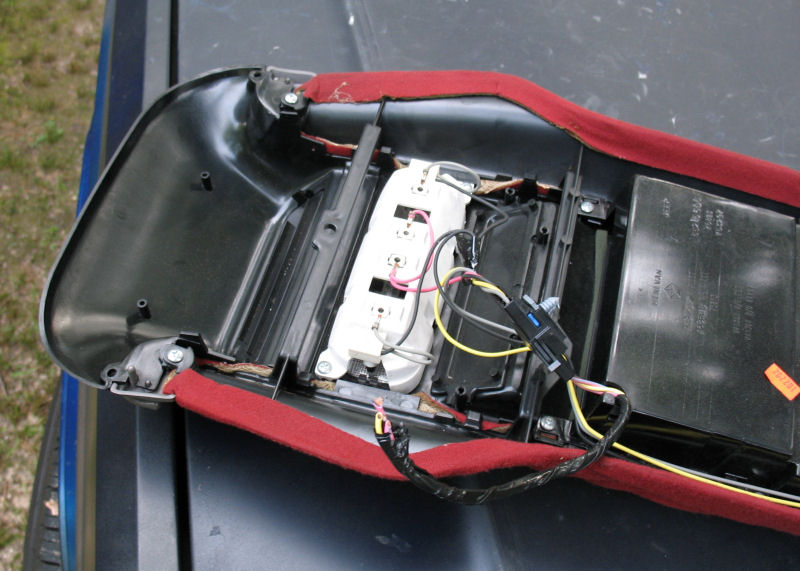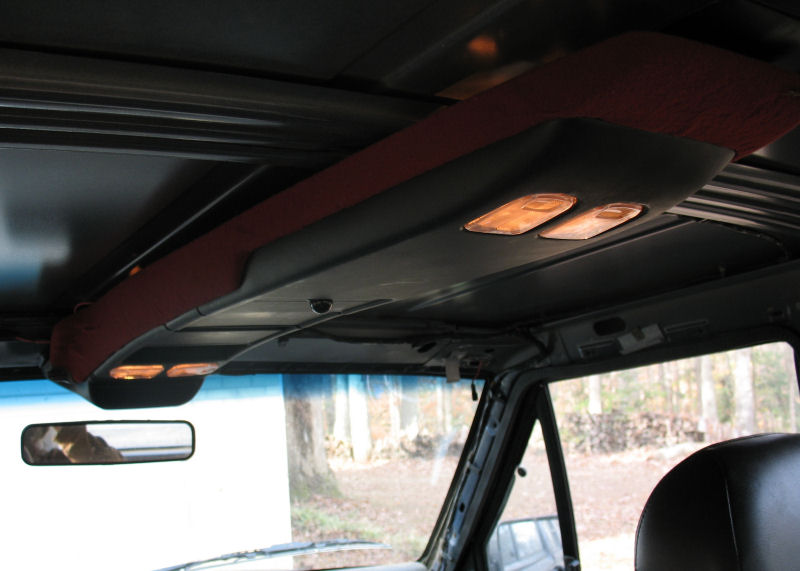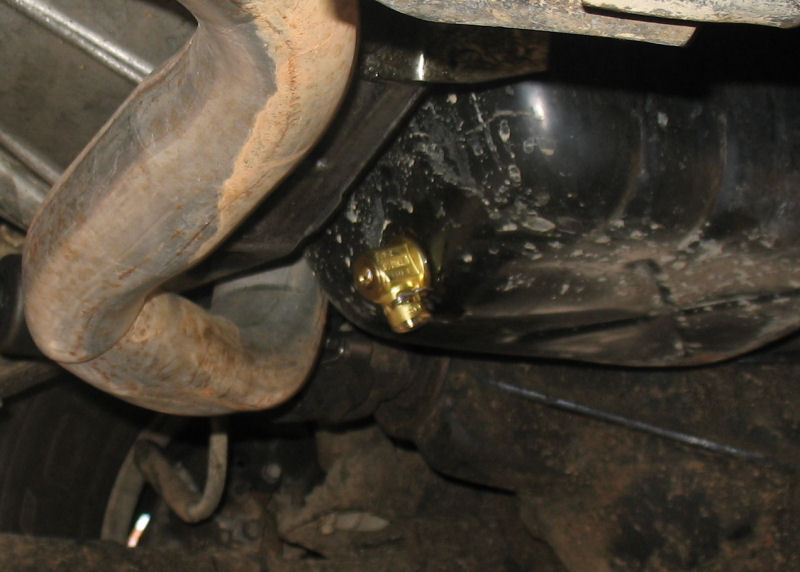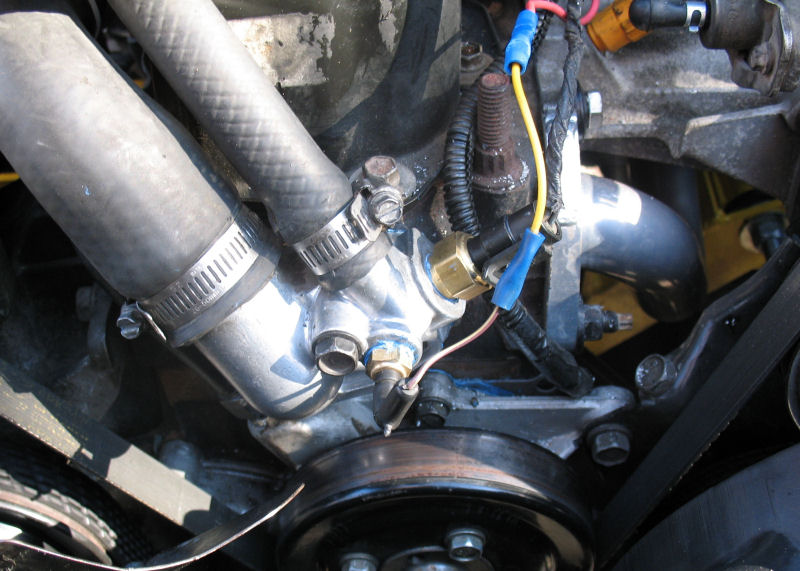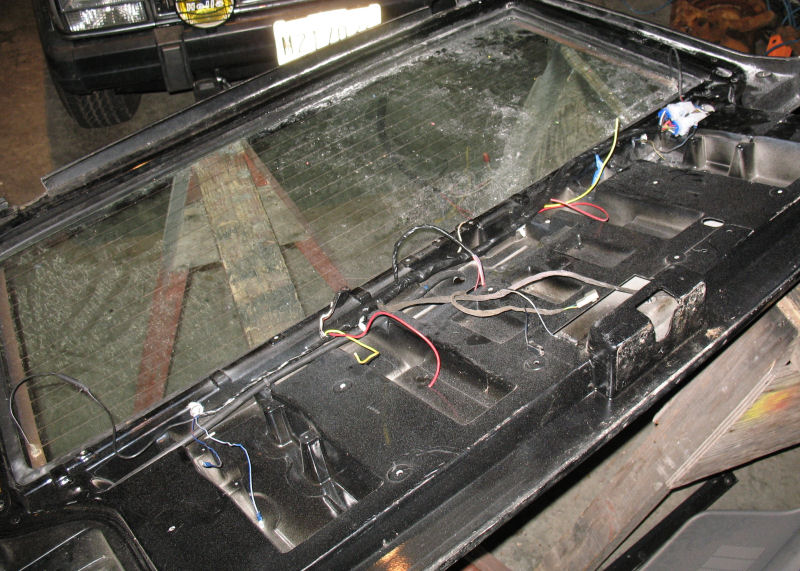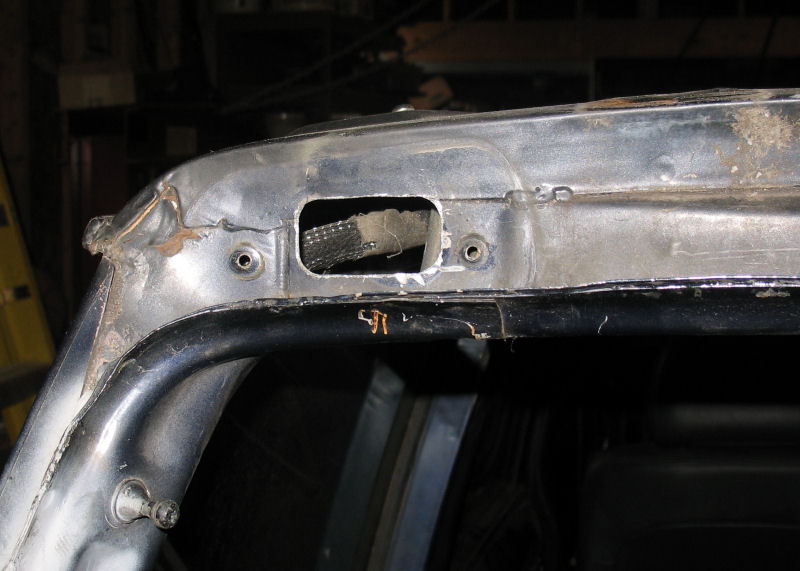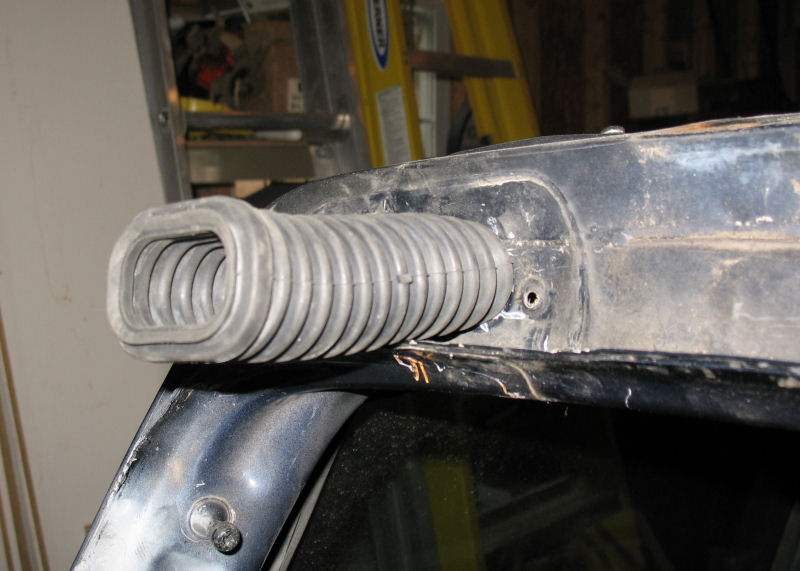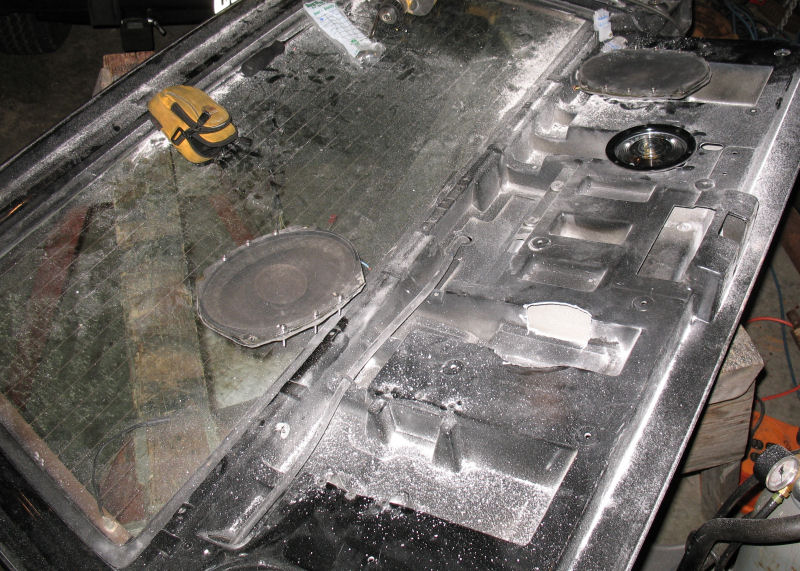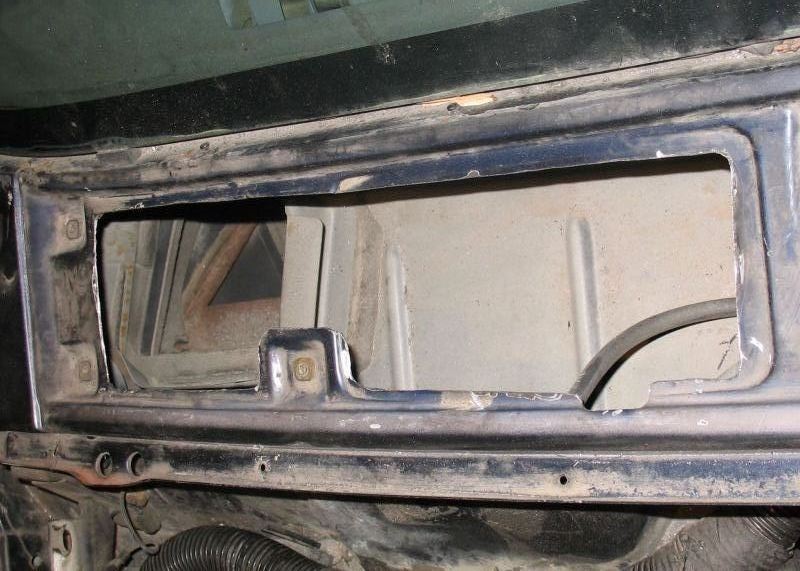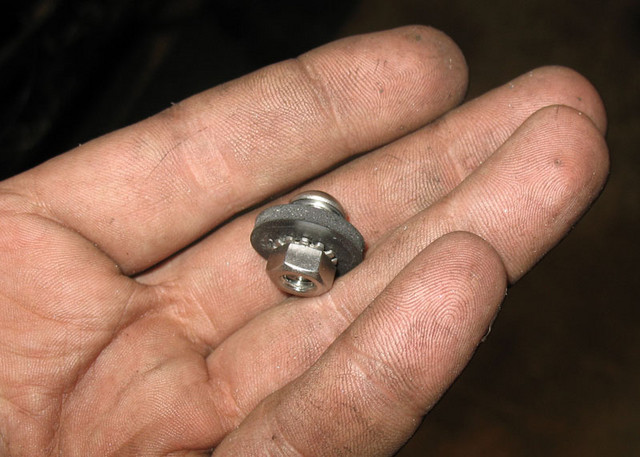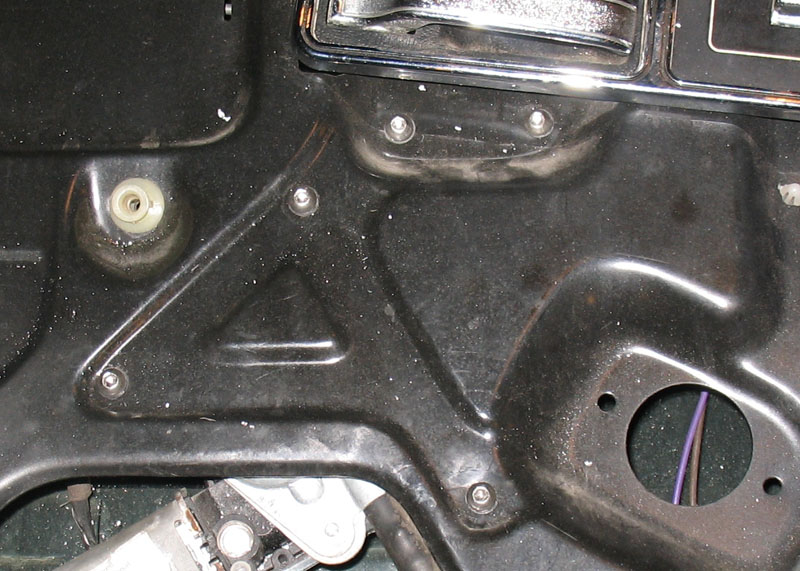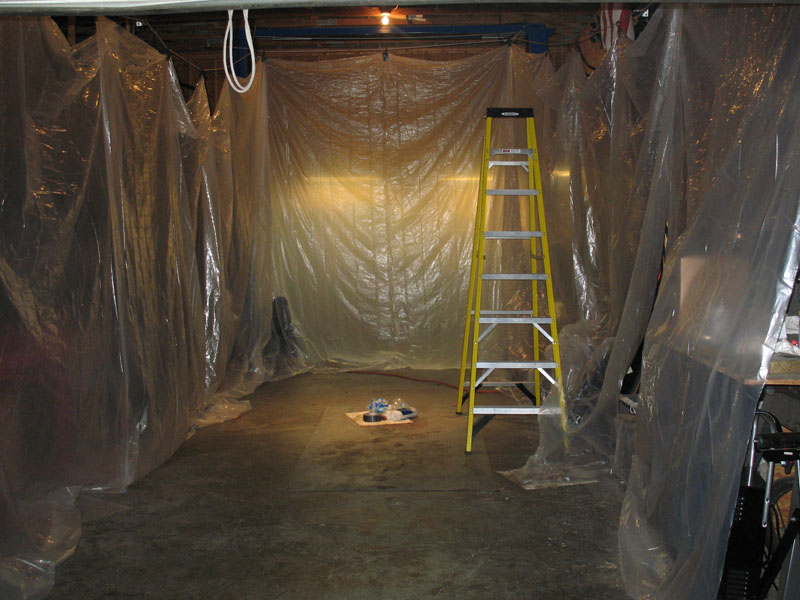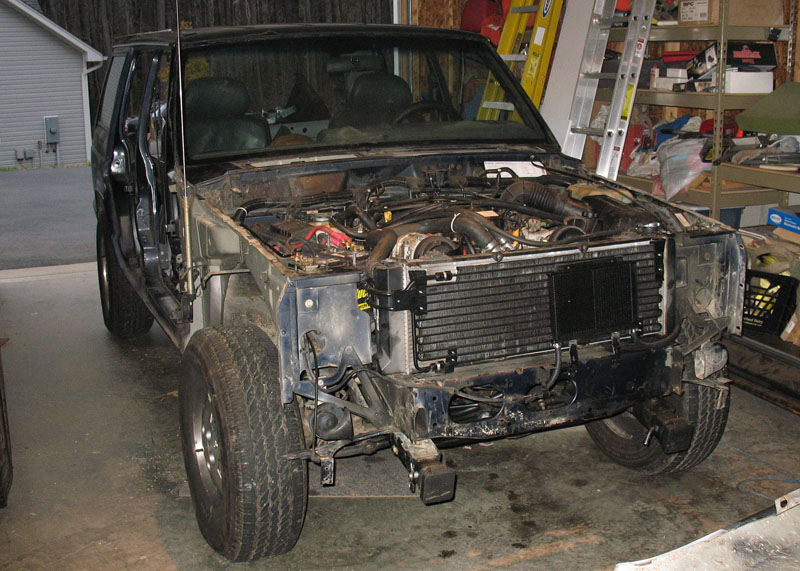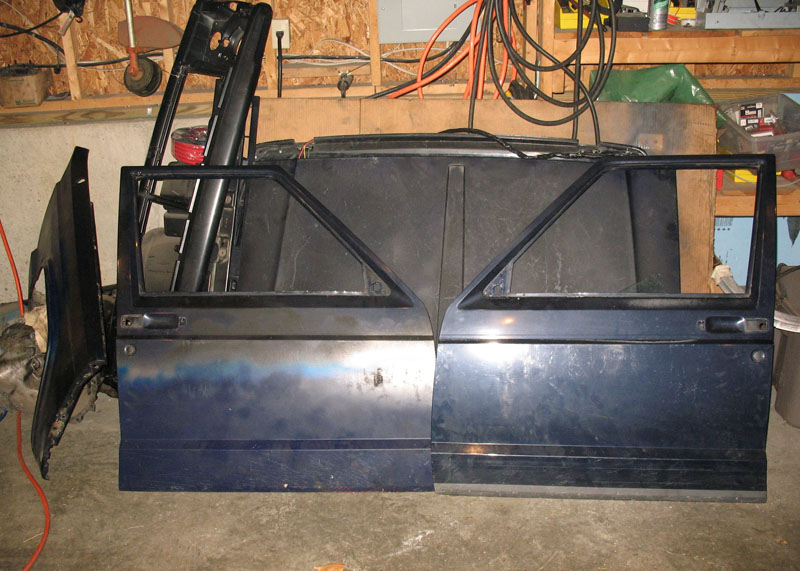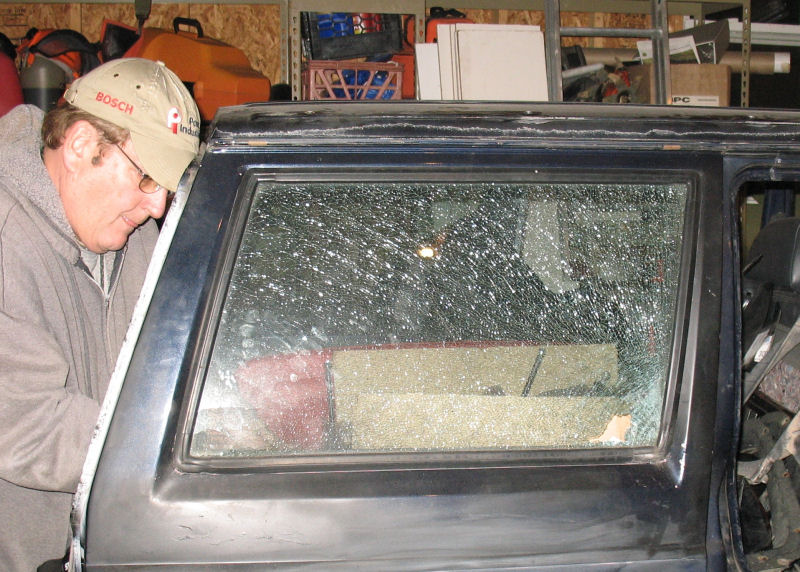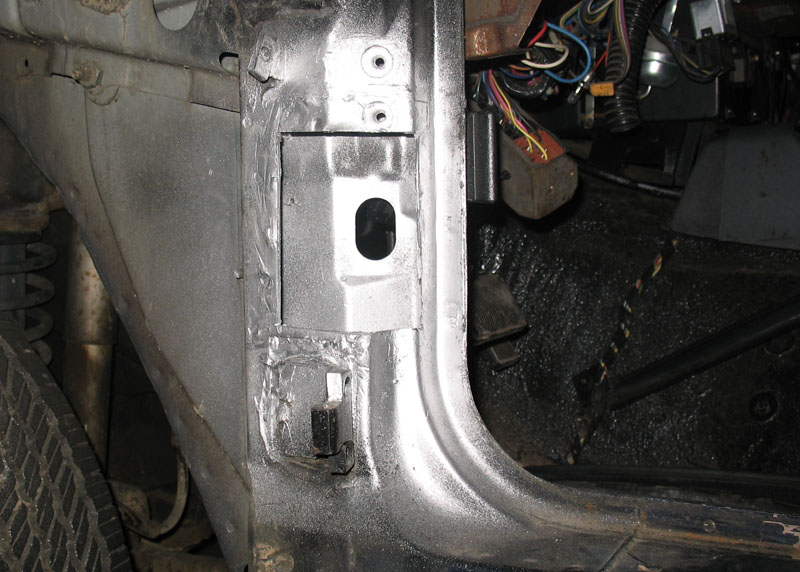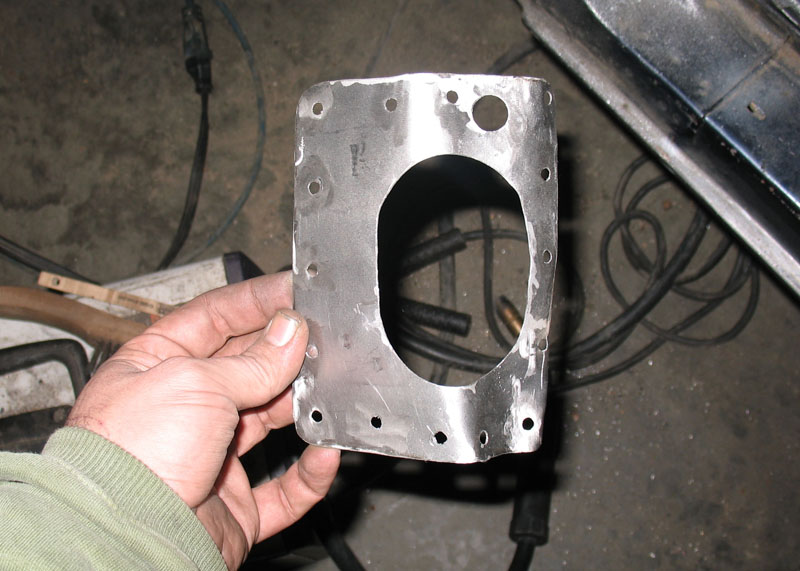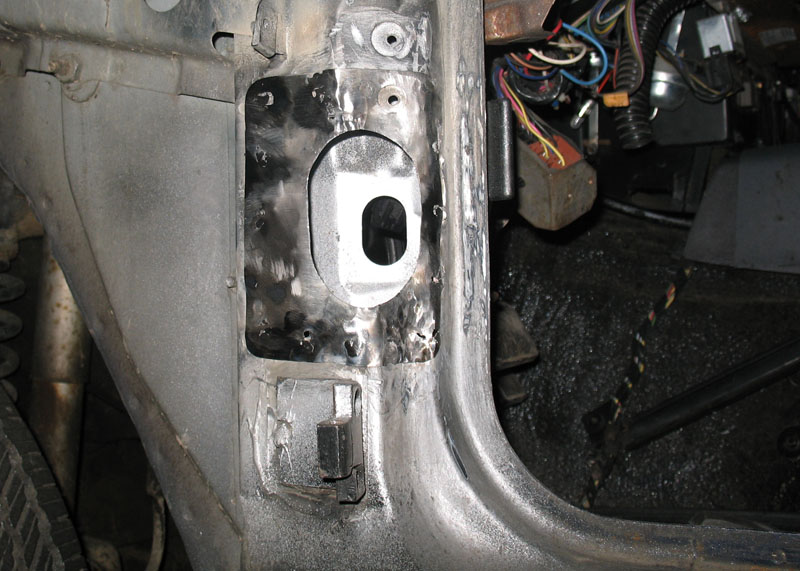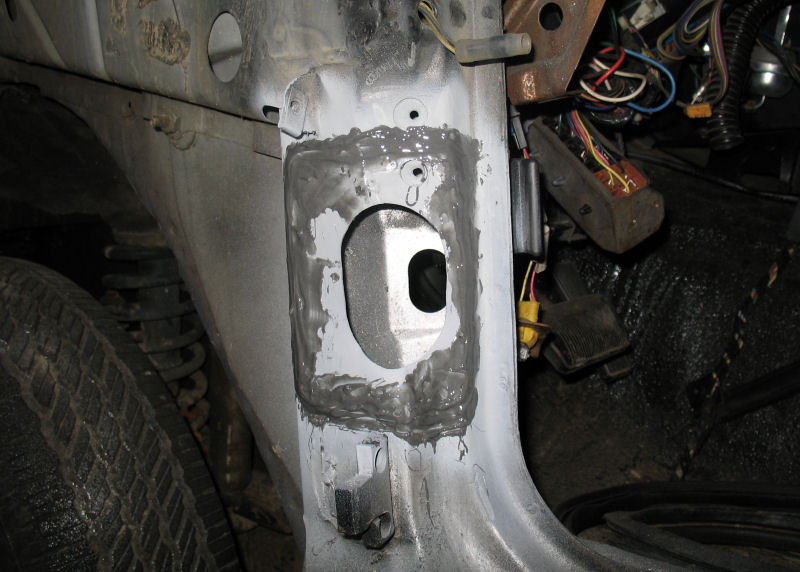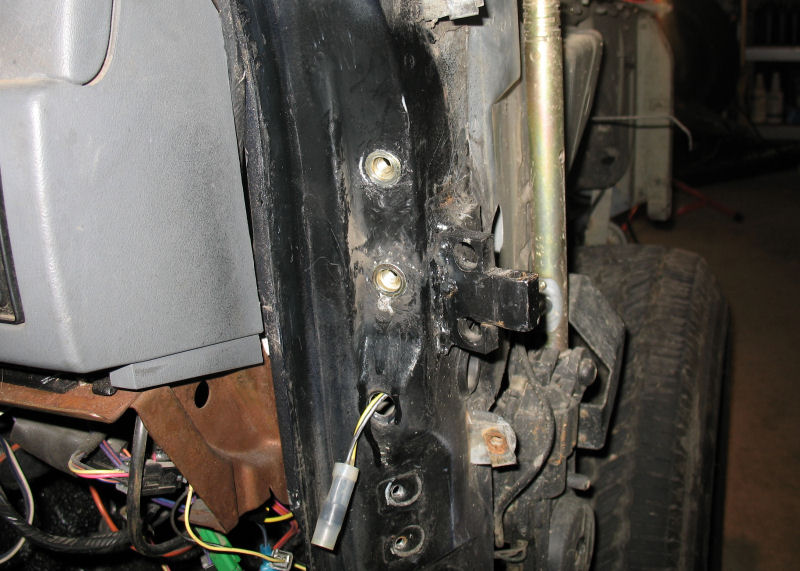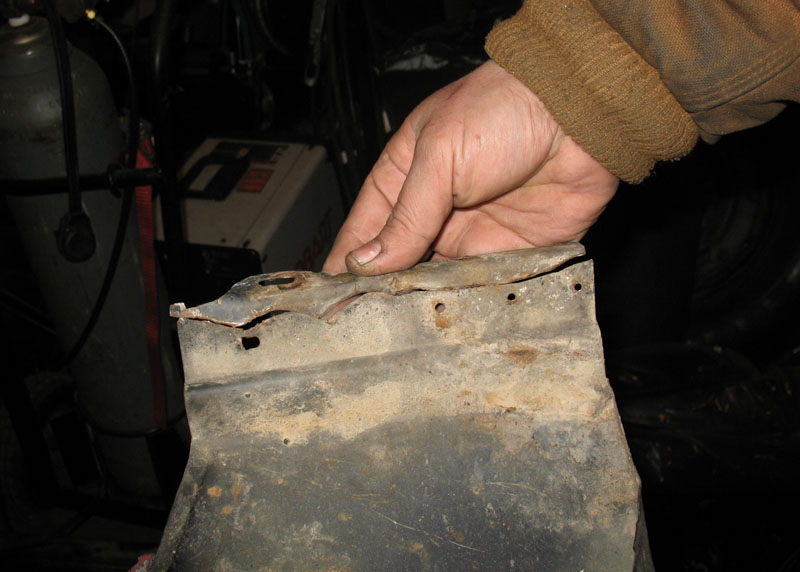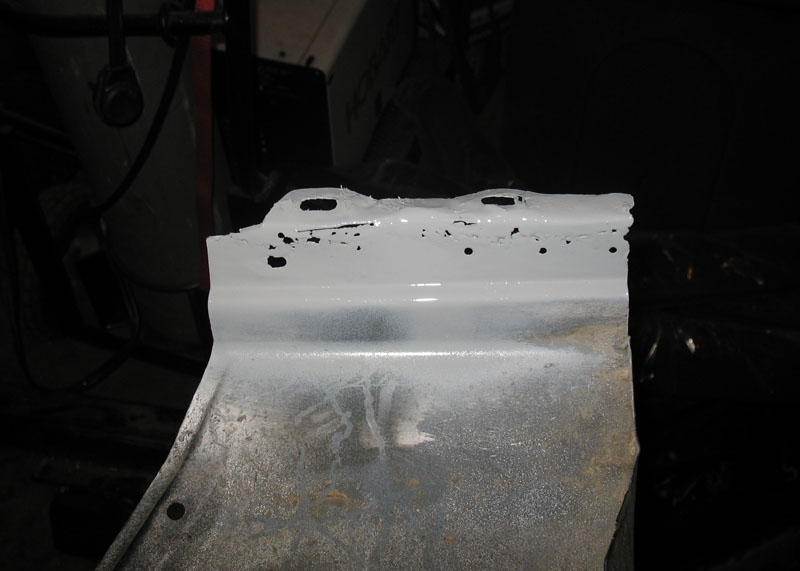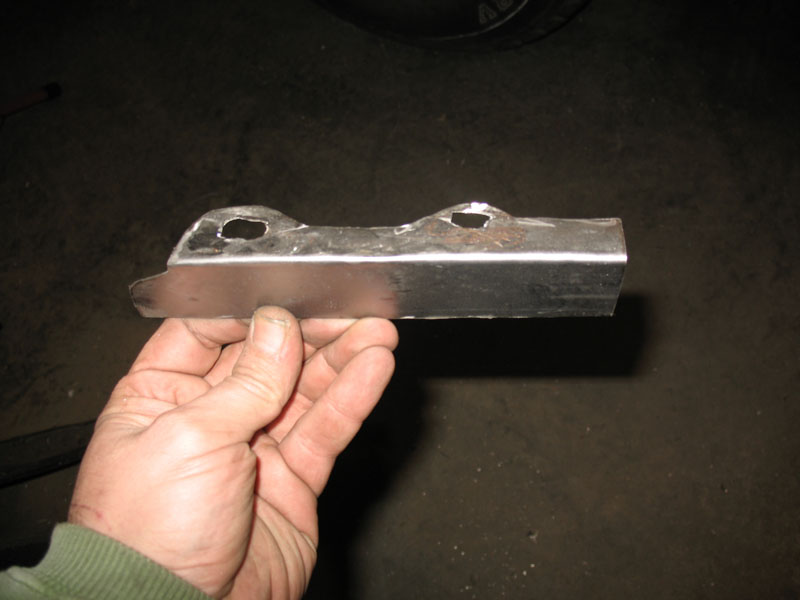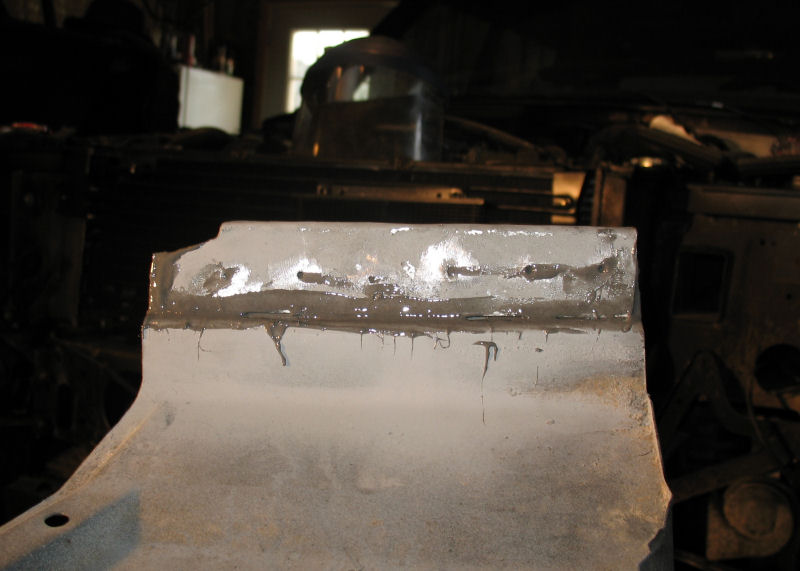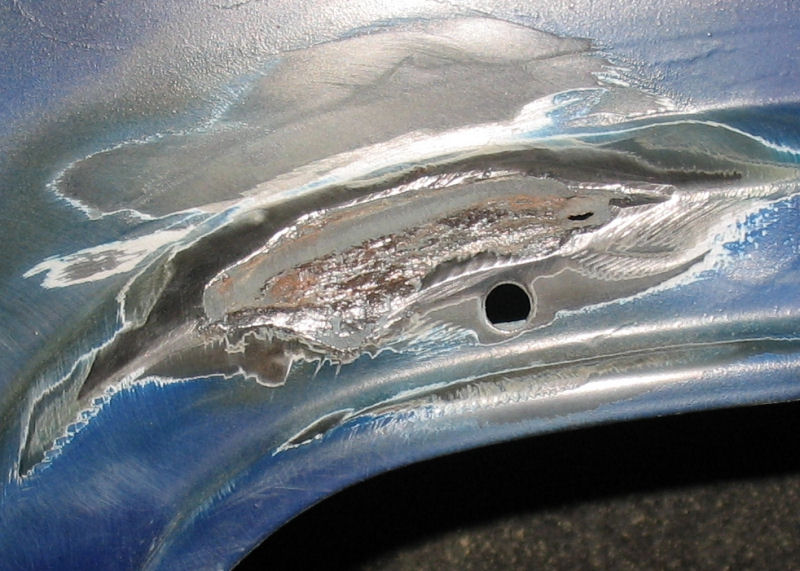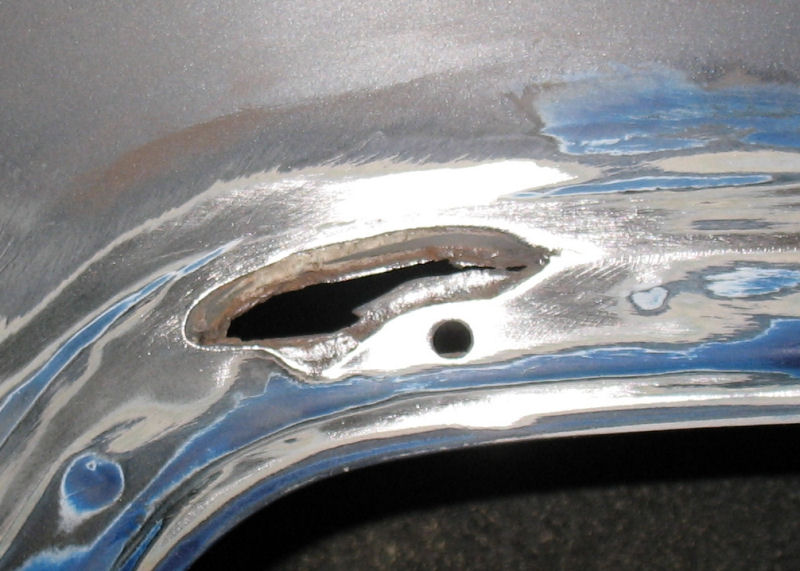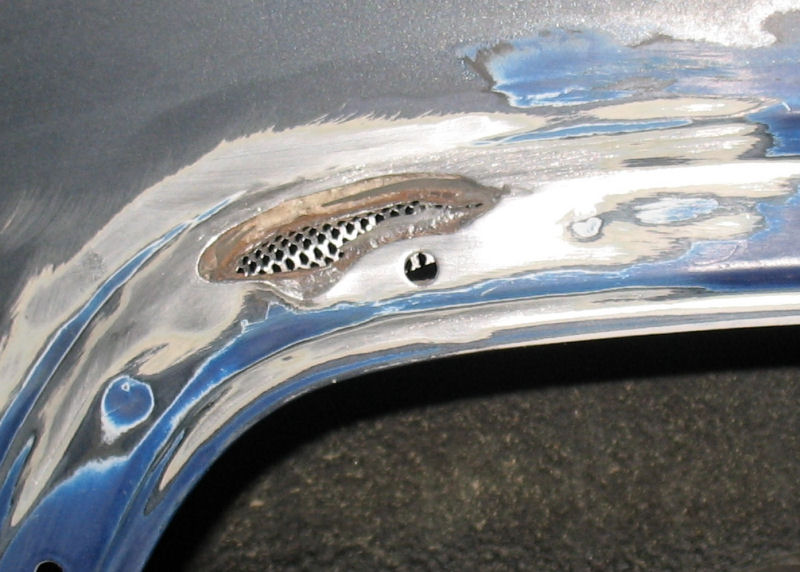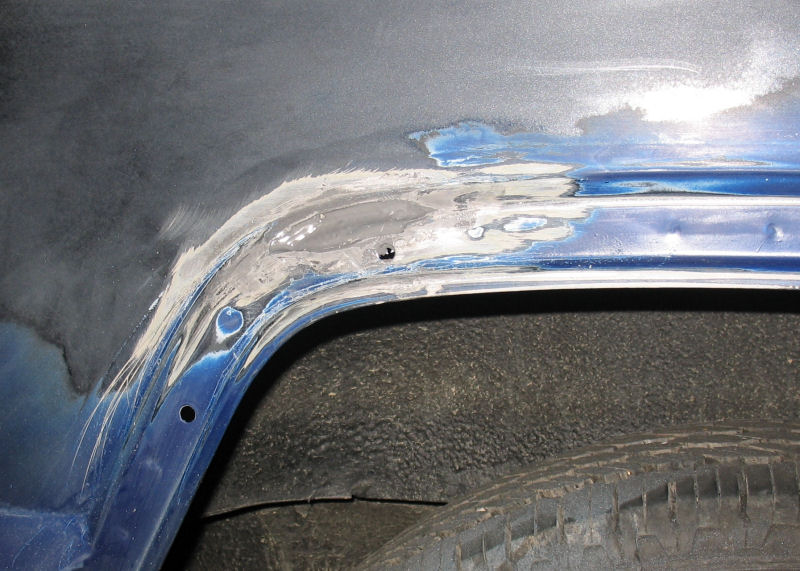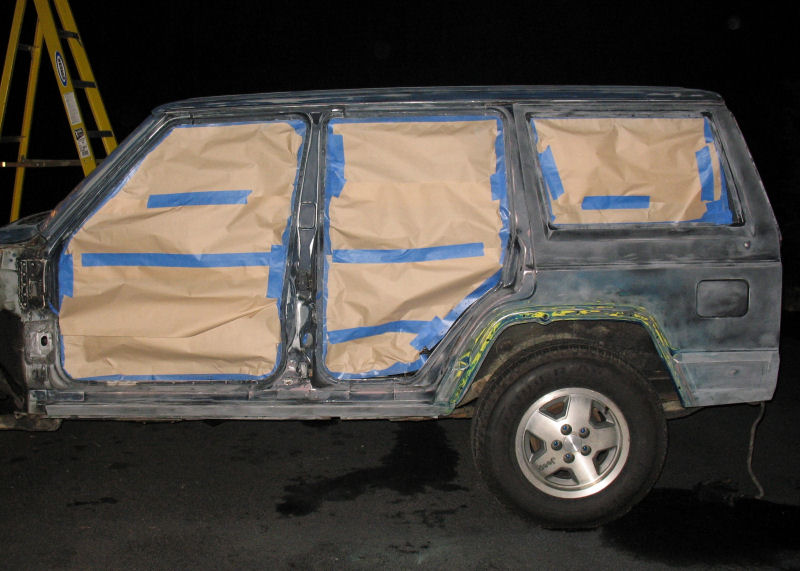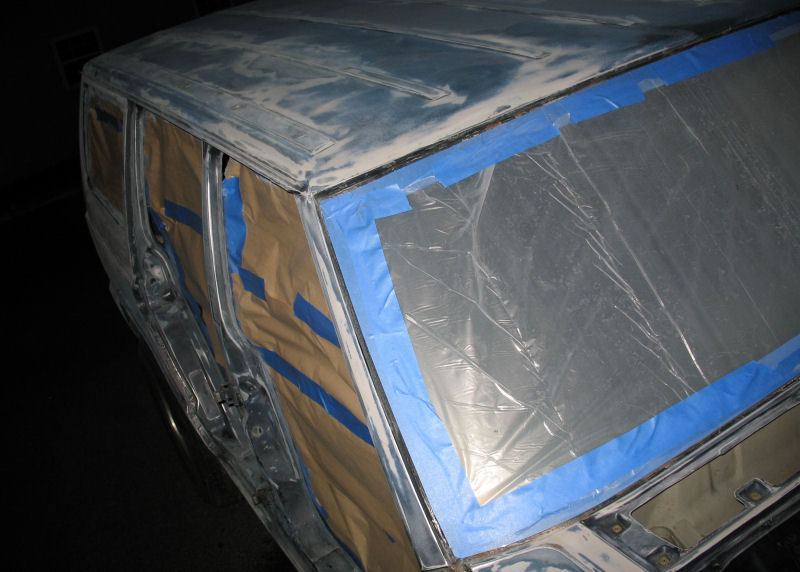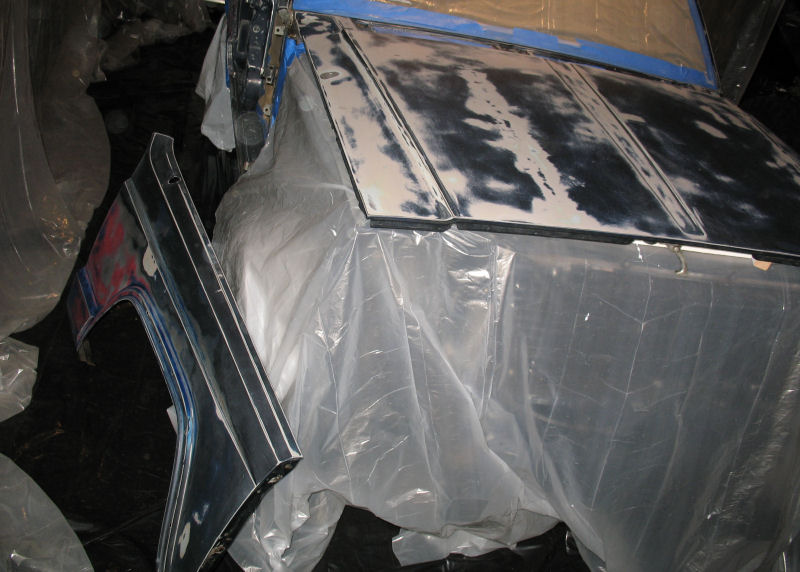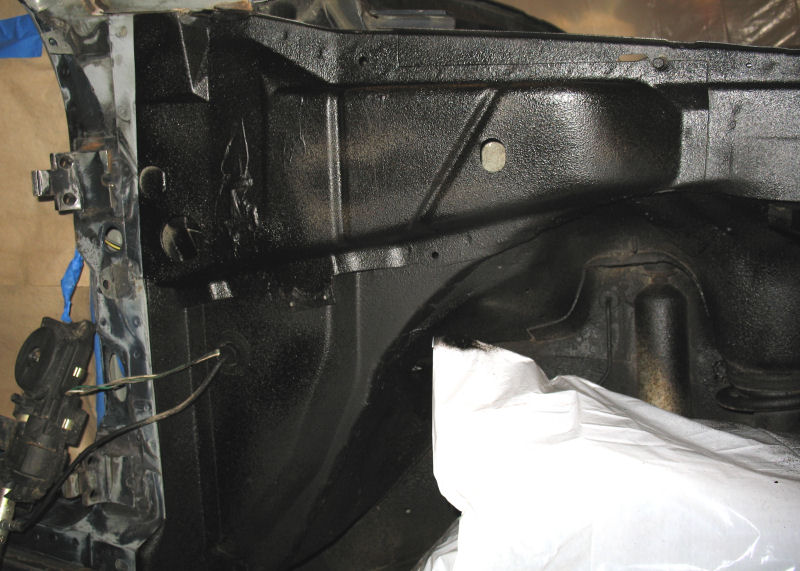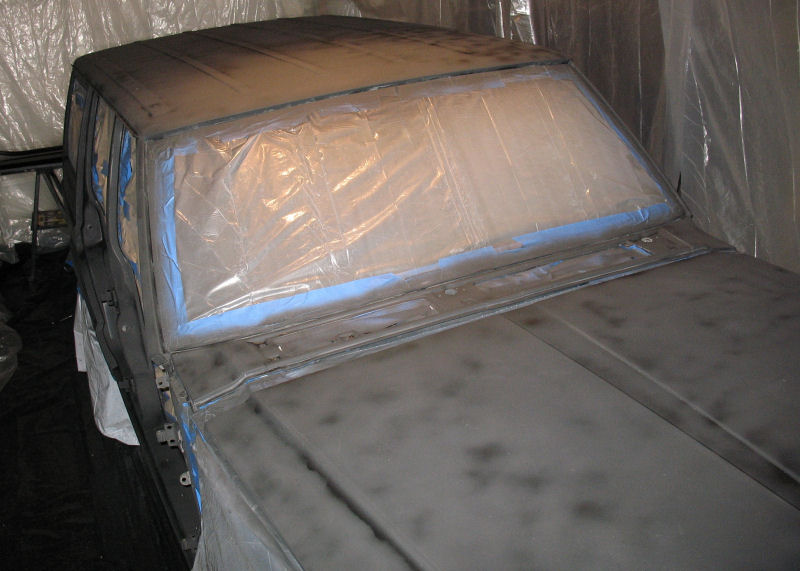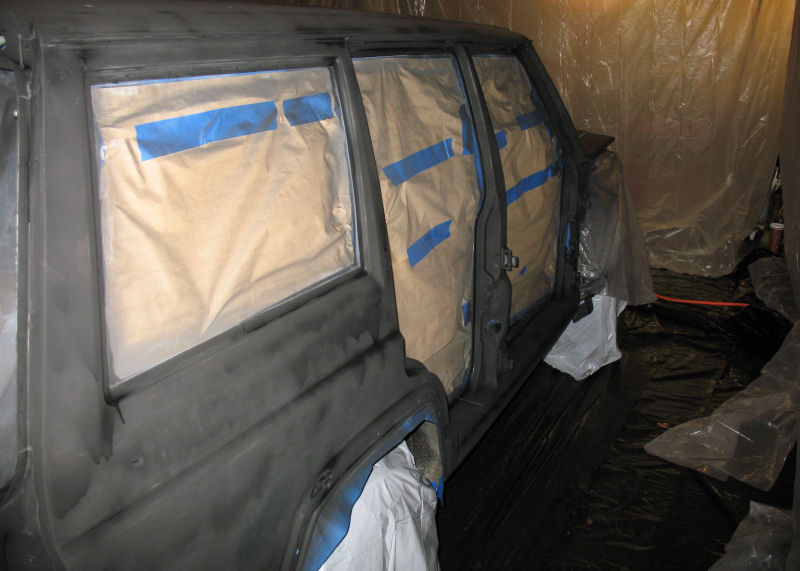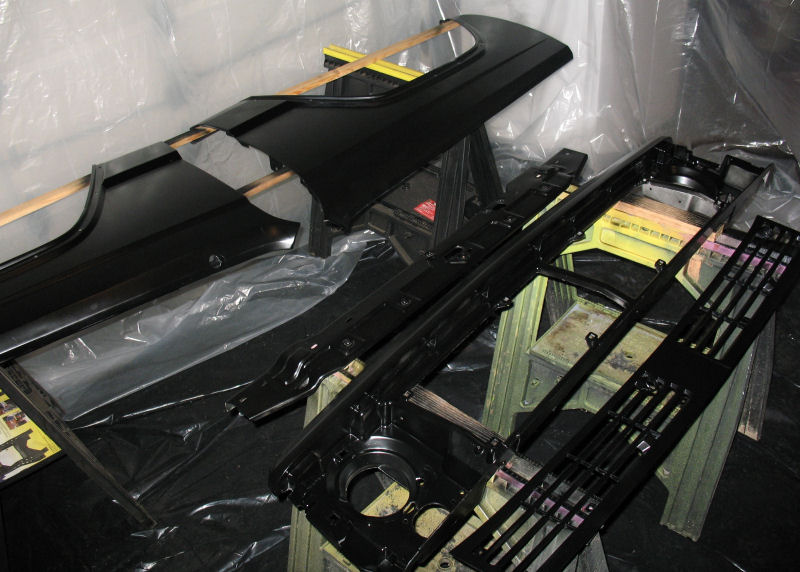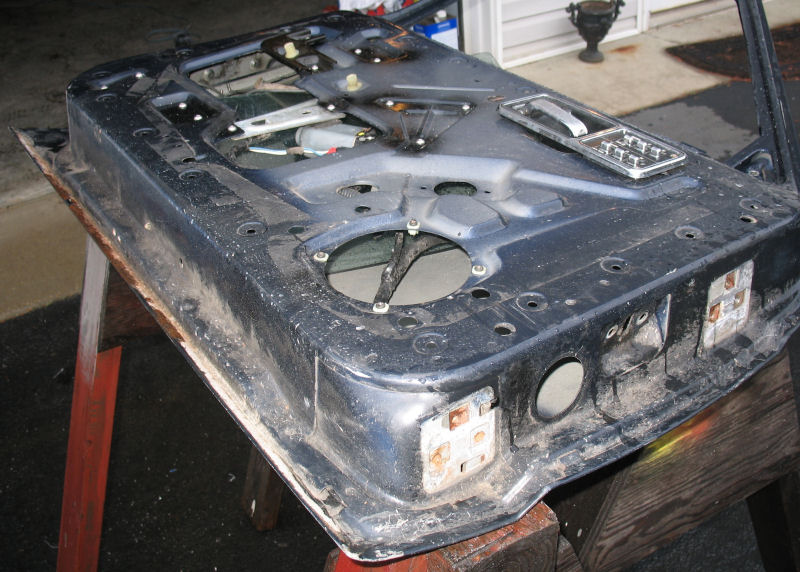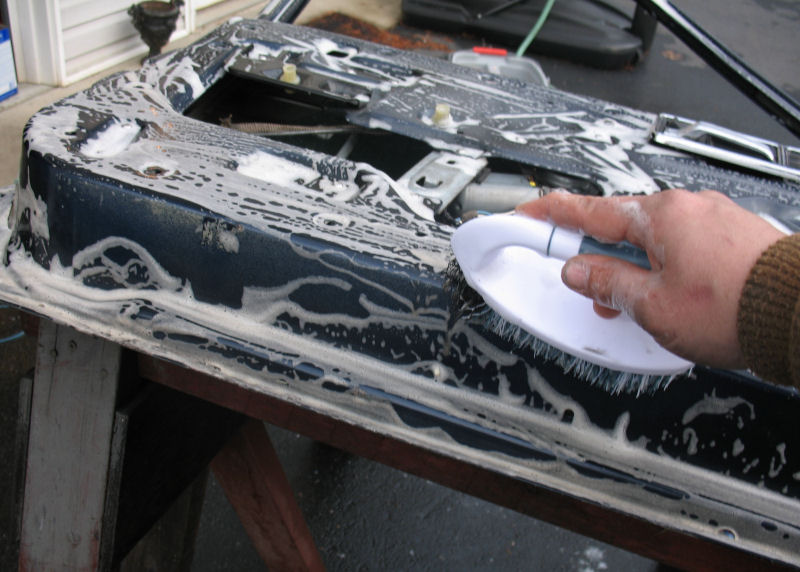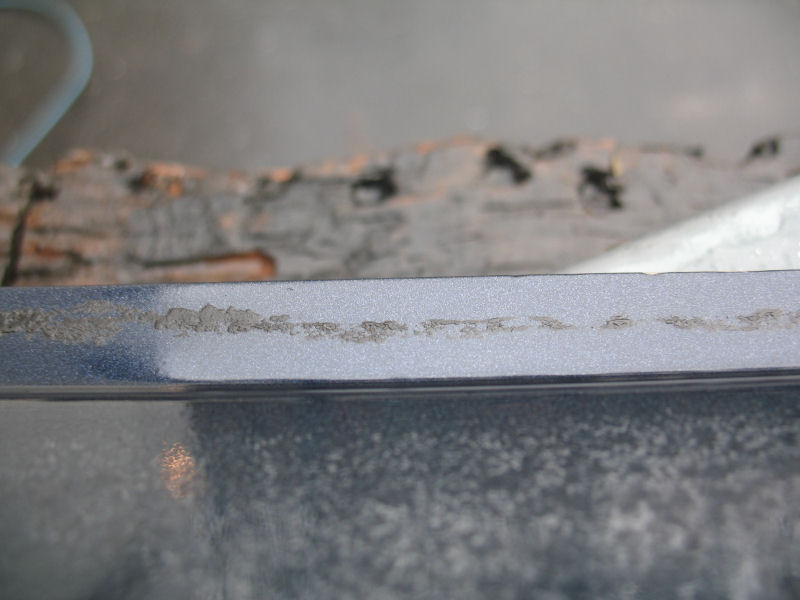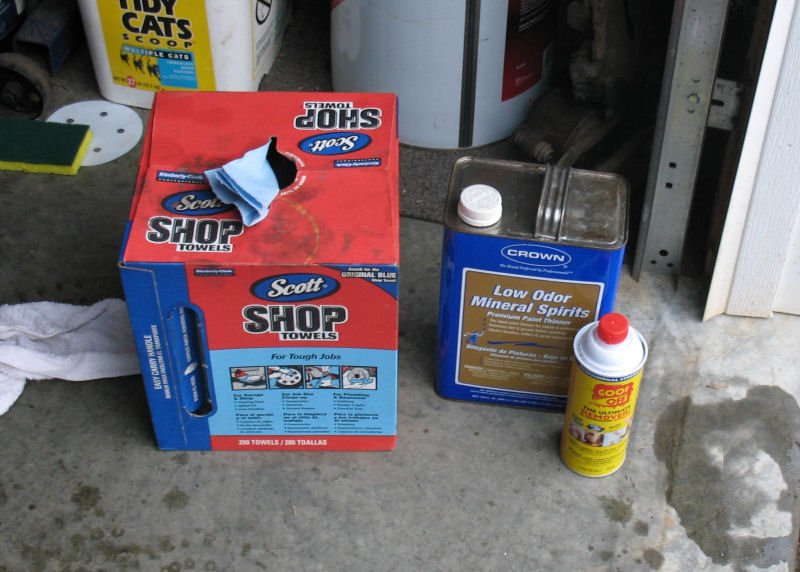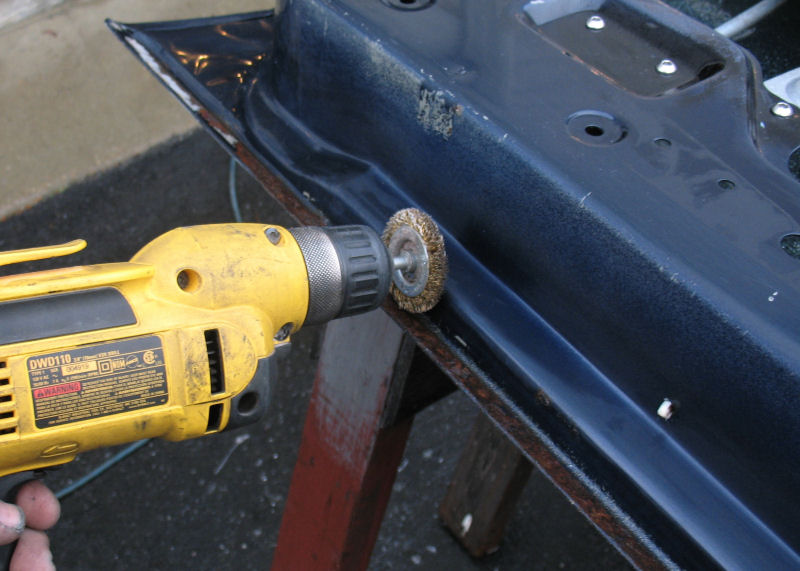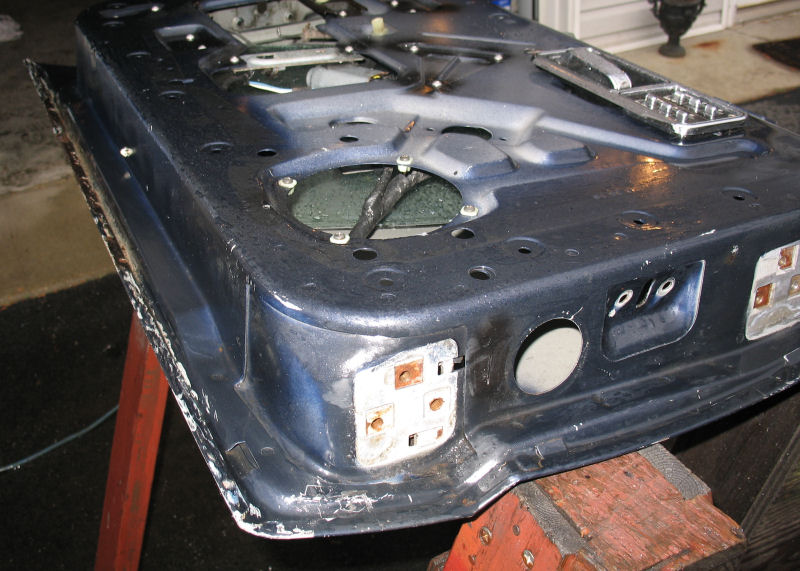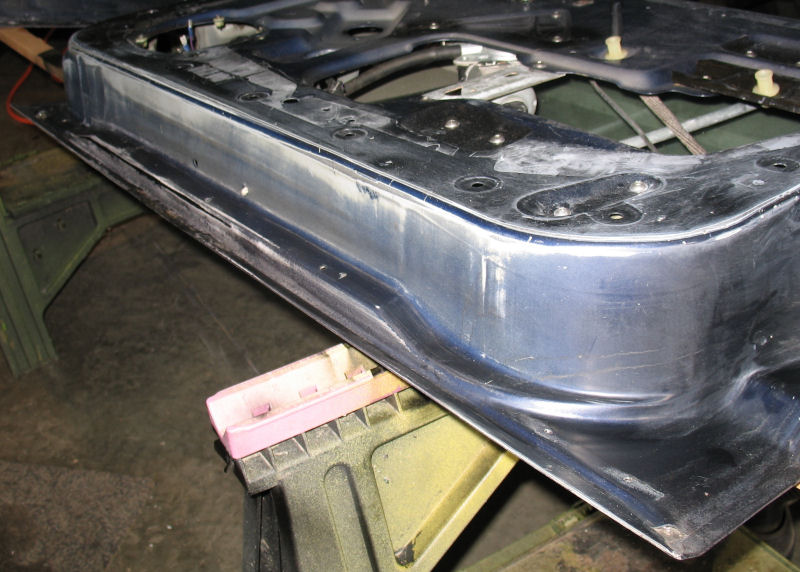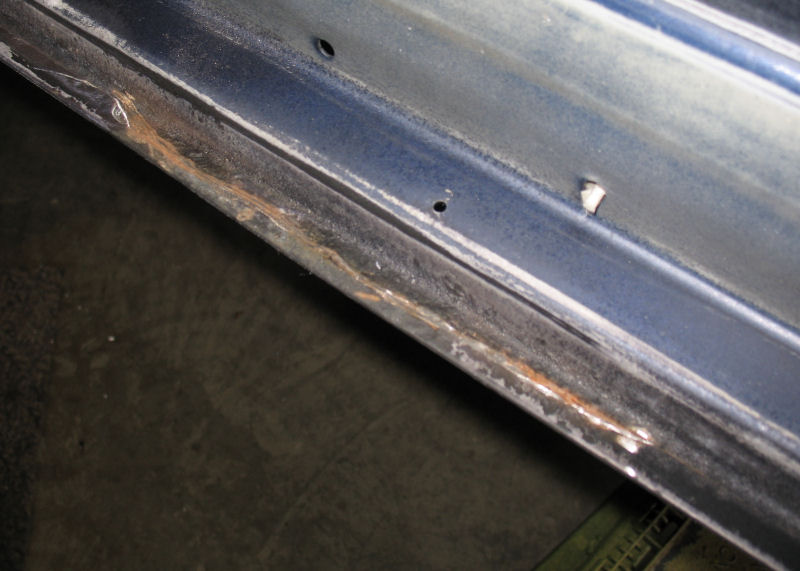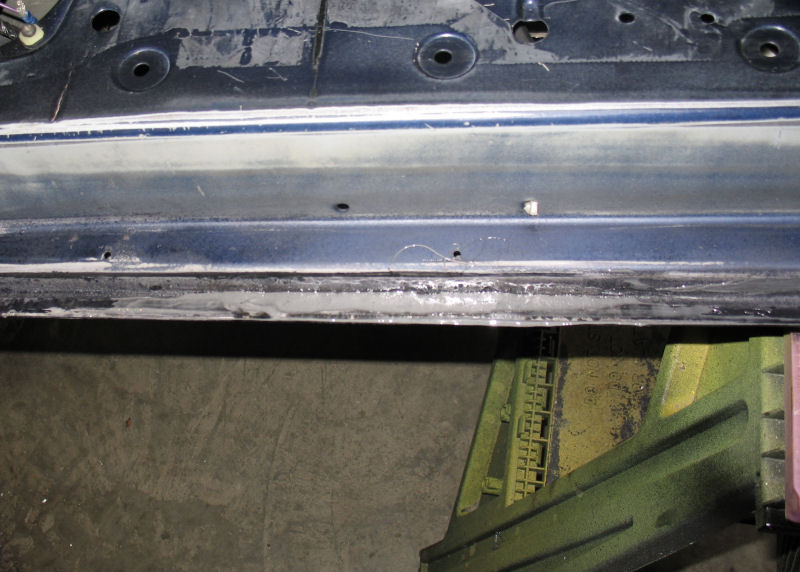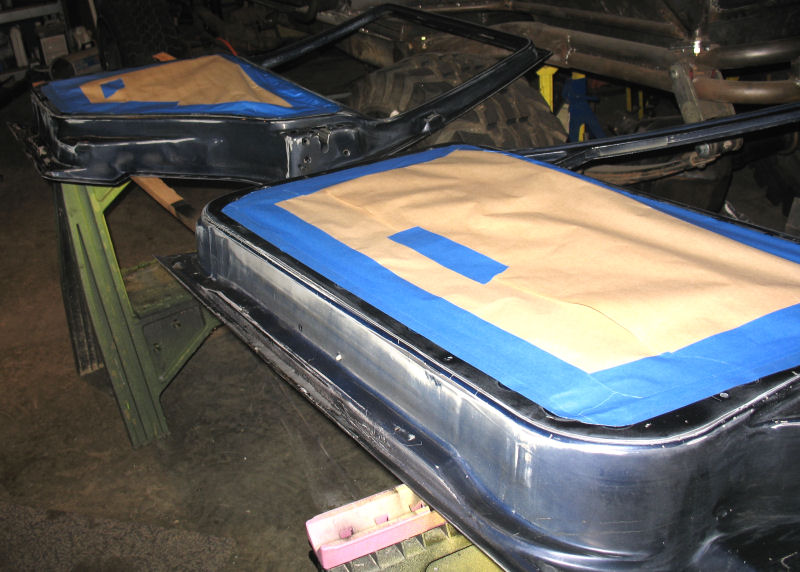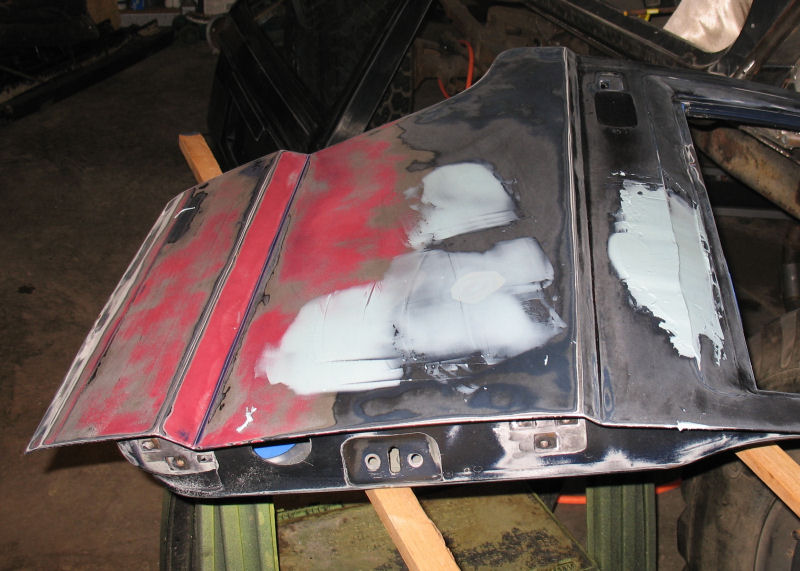I had ordered some vinyl floor covering from ACC with the intention of installing it during this spurt of nice weather we are having, but when I opened the box I found out it was carpet instead. So I had to ship it back (on my dime) and they are wanting a $40 restocking fee because I ordered vinyl flooring but chose "black carpet" under the "color" option. WTF would I choose black carpet under VINYL??? :gonnablow: Whatever... they can deal with VISA dispute department.
Anyways the engine was at the service mark after the powertrain swap so I got a bunch of that stuff cleared off the list.
First, I had ordered a
quick oil drain valve for the engine, and got that installed when replacing the break-in oil. These things are pretty neat--all you have to do to drain the oil is push the lever upwards then pull it sideways, and a little ball bearing seal moves up to allow oil out. In the product literature it shows the valve mechanism at the top
However as you can see in the picture, when the valve was fully inserted the lever hangs down at the bottom. I am only slightly concerned about hitting it on anything since the XJ engine is pretty well sheltered (I would not use this on a TJ though). We'll see how this holds up over time. I may experiment with the valve gasket at the next oil change to try to move the valve upwards.
Next on the list was installing a B&M 70268 tranny cooler. Although the beater already had a small tranny cooler as part of the tow package, I noticed that the hose routing was really convoluted when I did the powertrain swap, and I wanted to reroute them into a cleaner and more efficient flow. Also the original cooler is very small and while it is probably fine for light towing, the B&M coolers are so inexpensive that there was really no good reason not to upgrade while the lines were off.
For mounting, I simply removed the brackets from the original, mounted them to the B&M cooler, drilled two new holes in the front crossmember for the tabs to mount up, and then used the zip-tie things to keep the top from flopping around and damaging my new condenser. Here's a pic of the bracket setup.
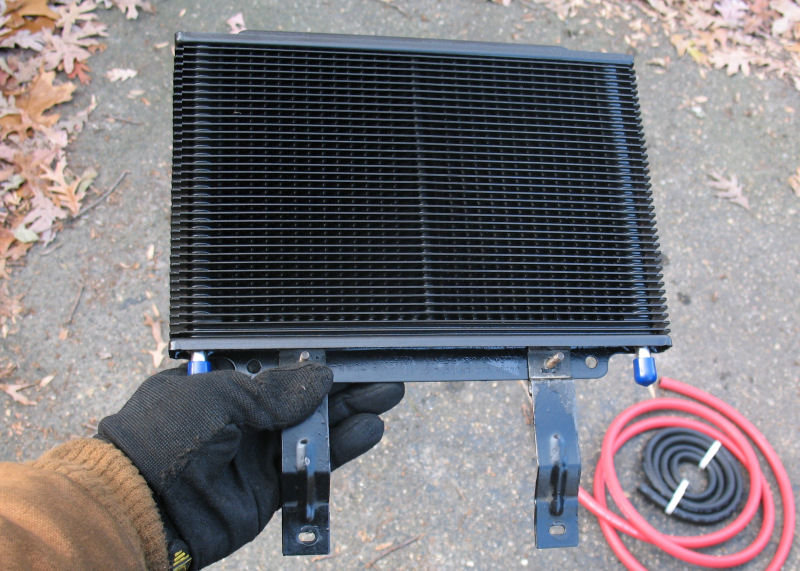
I used the recommended fluid routing, which has fluid coming from the tranny to the B&M, and then going into the radiator before returning to the tranny. I chose to keep the existing hard lines running up the engine since I did not want to mess with replacing the quick disconnects. I used a hacksaw to cut the end off the output line just past the starter, and used the B&M hose to route it into the cooler and then up to the top of the radiator, but the factory return line had a quick disconnect on the end of the soft line and it plugged right into the lower radiator port. Here's a pic of the cooler installed, and you can see the input line coming past the outside temperature sensor and the output line going to the upper radiator inlet along the driver's side.
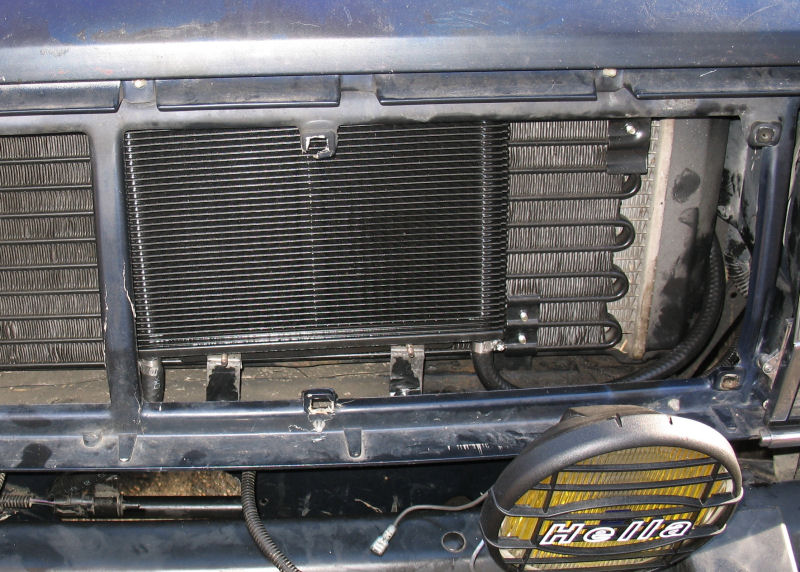
Last of the big items was relocating the temperature gauge sender from the block drain plug to the thermostat housing. Since I installed a '99 engine, there wasn't a hole in the head for the gauge sender, and so I had put the sender into the block drain plug. However the temperatures being reported from that were always 15+ degrees higher than actual values according to the ECM (as reported with a scanner), probably due to it being between two cylinder walls. I was also having a problem with the protective tubing around the sender wire being melted against the headers, so all around this was proving to be a bad decision.
Looking at the thermostat housing, it has a second flat spot on the front of the thing which looks like it was designed for just this purpose. I found several posts about people moving the sender here, and measurements show that the sender fits in there without interfering with the bolt, so I figured it was worth a shot. Pretty simple job, drill a 3/8 hole, use a 1/8 NPT plumbing tap from Lowes, and screw the sender in. The hardest part about this was removing the housing to drill the hole, and replacing the thermostat gasket. So far it is working perfectly, and it seems to be very quick to recognize changes in temperature--you really notice when the thermostat opens and closes.

I need to grab a new sender wire from the junkyard to finish the job, and will route the wire under the loom cover along with the sensor and injector wires.
I also changed the rear differential fluid and gasket, rebuilt the accessory vacuum harness and put the canister back under the bumper, and swapped the original cooling fan back in since the HD unit was running too much and keeping the engine too cold. I still need to do a couple of minor things like change the front differential fluid (will do when installing the lift--can't get at it with the drag link in the way), and a couple of other minor things. Pretty productive week so far though


